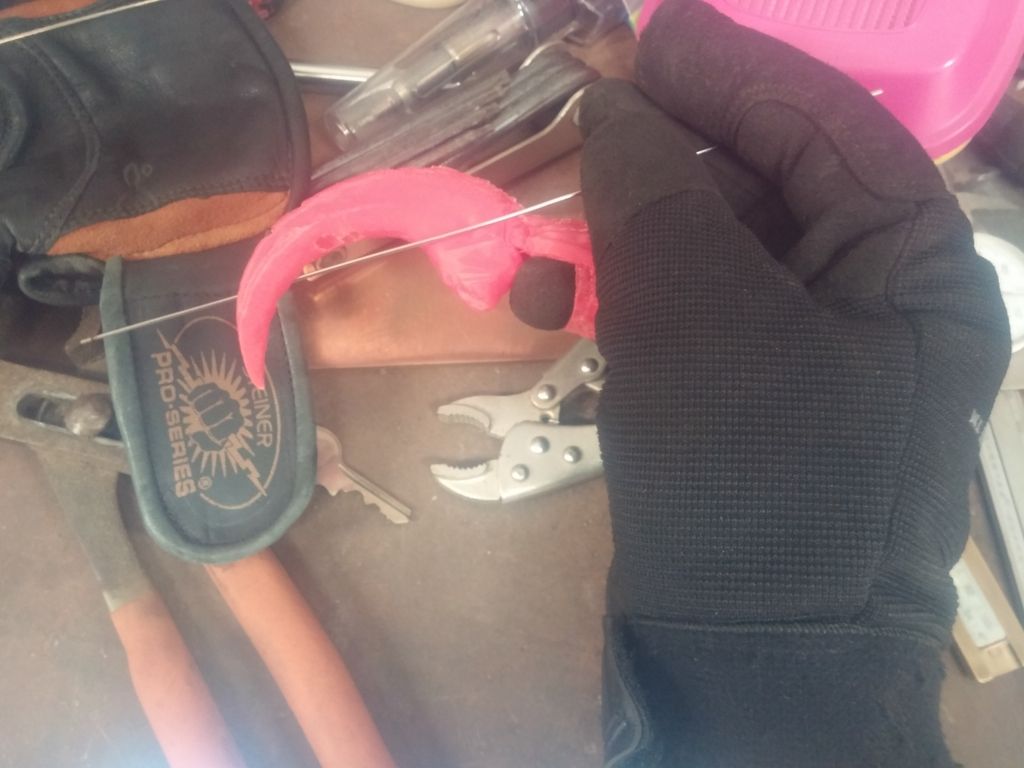LtBadd wrote:Let's see a video of your wire feeding prowess...Oscar wrote:I'm about to open the package in a little while, but yea they're here.
Let me see what I can do, lol. No promises though





It works! I bought one years ago when I was in school. I was trying to learn to feed normally-but used the tig pen for tests to make things easier.nelson wrote:I bought that tigpen thing. Yeah, I know, more money than brains. I tried it with a glove but haven't welded with it yet.






You are full of crapentity-unknown wrote:After a lot of testing, I have concluded this tool belongs on the Ring Finger! It takes the laziness away but the ability and control of rod feeding might be hard to beat without a machine.
The keyhole and basic rod guide path is all that's necessary i.e. I added a lot more to this tool than is necessary. Regardless as it is just swap to the ring finger and you might be pleasantly pleased that you can use your index, pointer, and thumb to deliver exceptional control. Perhaps unbeatable and I'm ready to stake this claim.
The feed and retraction speed that I can do just as a n00b is nothing like I've ever seen any Youtube teacher/expert portray.
While I plan to re-design a few points, I think that if you use the TIG Monster Claw and you switch to your ring finger, you might find limitless possibilities to feeding rod.
As for Oscar and his concern, please give your ring finger a shot and see if I'm full of crap. Use your pointer and middle to guide the rod, while you feed/retract with your thumb. It's a loose grip between the pointer and middle fingers with the thumb having all the control.
Can't wait for Rick and hopefully Oscar's replies here. Seriously though, moving the TIG Monster Claw to the ring finger and keeping the light grip between the index and middle finger for the rod while feeding/retracting with the thumb made a significant difference and truly convinced me that in the sense of laying fast beads with TIG, you will not find a better method beyond a mechanical device.
Please prove me wrong


Assuming I want to feel my own pulse in my finger from the squeezing action this thing has on my ring finger, LOL, part of my problem is that the material that my gloves are made of, some kind of leather, is just too slick. If I retract my thumb, it retracts the rod. If I let up so it doesn't retract the rod, the rod falls out of the grooves. It is 0.045" stainless rod, so it's not a "grippy" surface. See, you're still welding in the flat position with a 3/32" rod (maybe even 1/8". Perhaps what you say is true, that you can feed your rod at any angle---with 3/32" or 1/8" rod. I think that since I work on a variety of projects, or will be attempting so, I went into the deep end. Which is what I'd like for you to try: With your claw, try to weld up a 1" OD x 0.030" wall steel tube with 0.030" or at most 0.035" wire with your claw. Oh and not in the flat position and with nothing to rest your filler rod hand/wrist/elbow/entire arm, except for the actual tube you're welding. I think you will quickly see how it just won't work for me. Oh and make sure you take off your hands, and put on your Oscar-sized hands that has Oscar-sized fingers to make sure it is a fair comparison.entity-unknown wrote:You're just using pressure and you want to be able to slide your thumb back without retracting the rod to grab and feed more.


Return to “Tig Welding - Tig Welding Aluminum - Tig Welding Techniques - Aluminum Tig Welding”